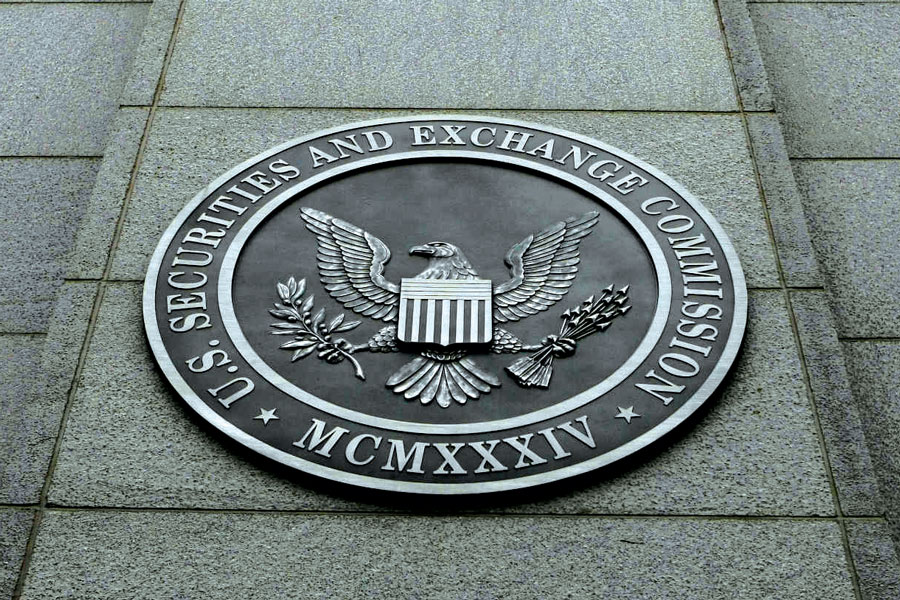SEC Pushes for Faster Retail Investor Access to Fund Data with Blockchain Solutions
30.08.2024 22:00 1 min. read Alexander Stefanov
The U.S. Securities and Exchange Commission (SEC) has advocated for more timely retail investor access to fund portfolio data, highlighting that current delays could disadvantage the 70 million American households that rely on this information.
Commissioner Jaime E. Lizarraga pointed out that during times of market stress, such as the Kovid pandemic, delayed data can impair investor decision-making. The SEC is focused on improving the regulatory framework to provide faster access to this critical financial information.
A potential solution to this problem lies in blockchain oracles, such as those provided by Chainlink. These oracles serve as intermediaries that connect the blockchain to external data sources, allowing smart contracts to be executed based on real-world input. Using decentralized oracle networks (DONs), blockchain systems can securely retrieve, verify, and transmit external data, ensuring that it remains tamper-proof. This technology has already been successfully deployed in decentralized financial applications (DeFi) where real-time data feeds are critical.
Chainlink’s partnerships with financial institutions such as Fidelity International and Sygnum have demonstrated the ability to input net asset value (NAV) data into the chain, offering real-time transparency and accessibility to fund portfolio data.
Integrating blockchain oracles into the financial ecosystem could directly address the SEC’s concerns by providing retail investors with timely and standardized access to portfolio data, thereby enhancing investor protection and enabling the SEC to more effectively monitor market trends and risks in real time.
-
1
German State-Owned Development Bank Issues €100 Million Blockchain Bond
11.07.2025 7:00 2 min. read -
2
Tether Ends Support for Five Blockchains in Infrastructure Shift
12.07.2025 11:30 2 min. read -
3
Cardano and Ethereum Lead in Developer Activity as GitHub Commits Surge
14.07.2025 12:00 1 min. read -
4
BNB Chain Upgrades and Token Delistings Reshape Binance Ecosystem
16.07.2025 22:00 2 min. read -
5
Ripple Powers UAE’s First Tokenized Real Estate Project via XRPL
16.07.2025 21:00 2 min. read
Peter Thiel-Backed Crypto Exchange Files for IPO
Cryptocurrency exchange Bullish, backed by billionaire investor Peter Thiel, has officially filed for an initial public offering (IPO), marking a major step toward entering the public markets.
Tether Plans U.S.-Issued Stablecoin After Trump Signs GENIUS Act
With President Trump officially signing the GENIUS Act into law, the regulatory landscape for stablecoins in the U.S. has entered a new phase—prompting major reactions from the industry’s top players.
Block to Join S&P 500 Following Chevron–Hess Merger Completion
Block Inc. (NYSE: XYZ), the fintech powerhouse behind Cash App and Square, will officially join the prestigious S&P 500 index next week.
Crypto Sector H1 2025 Roundup: Binance Report Shows Institutional Surge and Tech Growth
According to Binance Research’s H1 2025 digital asset market report, the total cryptocurrency market value rose by 1.99% year-to-date—signaling cautious optimism following 2024’s explosive 96.2% rally.
-
1
German State-Owned Development Bank Issues €100 Million Blockchain Bond
11.07.2025 7:00 2 min. read -
2
Tether Ends Support for Five Blockchains in Infrastructure Shift
12.07.2025 11:30 2 min. read -
3
Cardano and Ethereum Lead in Developer Activity as GitHub Commits Surge
14.07.2025 12:00 1 min. read -
4
BNB Chain Upgrades and Token Delistings Reshape Binance Ecosystem
16.07.2025 22:00 2 min. read -
5
Ripple Powers UAE’s First Tokenized Real Estate Project via XRPL
16.07.2025 21:00 2 min. read


